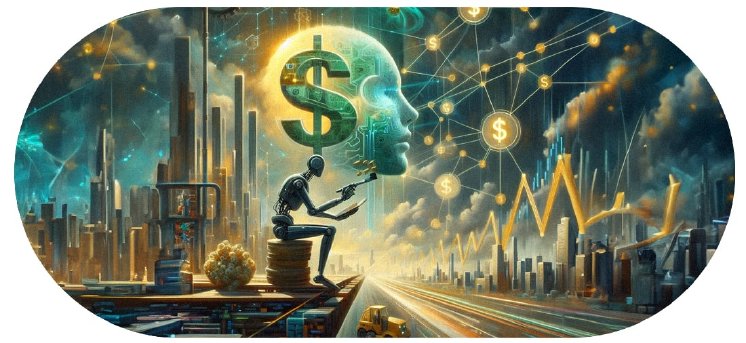As these value chains grow in complexity, they demand innovative solutions to navigate the challenges and seize the opportunities they present. The role of supply chain finance (SCF), in that respect, has become increasingly valuable, particularly in the pursuit of the ultimate value chain.
“A value chain is, in an ideal world, the thorough and true combination of the physical and the financial supply chain,” says Markus Wohlgeschaffen, Managing Director at Traxpay. “
“The real value-added there is that companies don’t have to request a typical bank loan. Instead, they can rely on transaction-based liquidity generation based on the actual exchange of goods and services. The ICC has repeatedly demonstrated in its Trade Register Initiative that the loss-given default (LGD) of trade and supply chain finance products is many times lower than that of corporate lending products. So the stakeholders in the value creation process inject liquidity using specific SCF techniques and instruments along the entire production cycle.”
Wohlgeschaffen underscores neatly the influence that SCF instruments have on value chain ecosystems, demonstrating the vital role they play in the flow of goods, services, and information across the supply chain. In a sense they act as a buttress against bottlenecks, simultaneously eliminating inefficiencies while fostering collaboration among its stakeholders.
For Sarat Mohanty, Head of Transformation & Implementation at Sumitomo Mitsui Banking Corporation (SMBC), it is a question of connecting the dots. “Where is the value intended, and why?” he poses as an important consideration.
“For commercial organizations, value is created for your investors, your core business, and your people – and it is the people that will make the difference, creating the value, whether it is a commercial value or a perceived value.”
Balancing those elements, he adds, requires a complete picture of the ecosystem and calibrating the approach so that it resonates with each stakeholder. That is especially true of supply chain finance instruments, which he says aren’t often viewed as a strategic pillar.
“If I know a supplier has a fantastic product but I’m not sure if they’re financially sound, I may have to address their working capital problem, for example. That way I can get the best product for my company and solve the finance problem,” Mohanty suggests, “and by bringing the financing into the strategic layer as part of your integrated business planning you open up the ecosystem.”
He also emphasized that “joining the ‘three dots’ at every stage of your value chain is critical.”
Moving parts
Joining the dots is a recurring theme throughout modern value chains. The intersection between risk, technology, and sustainability is well known. Through the lens of SCF their relationship to one another is brought into sharper focus. Banks are jittery in the wake of three turbulent years and increasingly wary of lending to businesses that aren’t operating sustainably.
“What’s important, in this respect is not how often you are right but how often you are wrong”
Does tech have an answer? According to Peter Mulroy, Secretary General at FCI, the answer is yes. “You see a lot of companies that don’t understand how to properly evaluate risk,” he says. “They don’t have anyone to lean on, there’s no expertise in their company.
“Some years ago, UPS set up UPS Capital and hired logistics people to run it. They ended up with huge fraud when they came over to Europe and ended up closing because of it.” The moral of that particular story is prescient, especially in light of AI. With fraud, as Mulroy says, it’s easy to be wise after the event because you can only ever examine fraud after it happened.
“That’s where I see artificial intelligence playing a very important role. We can profile, predict, and analyze [the risk profiles]. What’s important, in this respect is not how often you are right but how often you are wrong.”
Mulroy hints at the democratizing power of technology. Circling back to the ultimate value chain and the way financial networks work within it, he acknowledges the phases and cycles they go through. Recently, we’ve been in a low-interest period, where capital is easy.
But as technology comes into play and interest rates rise access to capital becomes harder; geopolitics creates tension and to an extent, the financial systems become politicized. What does that do to how the financial system is organized in the value chain?
“You can take a step back and say that finance to some degree is also like a pulse of the quality of how value chains are organized, of how they compare to others,” he says. “So it could be that the way trade finance is organized in a value chain has something to do with the quality of it.
“And if that ethical element is there, there’s probably better relationships there and better risk management. So the trade finance works better.”
Tech is an enabler
The idea that tech has a democratizing effect plays out in trade finance techniques too, though there is a sense that, in that context, it could concentrate power in the value chain. “In theory, it is democratizing because if you take your own liquidity you could as a buying client offer this to any supplier,” says Wohlgeschaffen. “Applying SCF instruments, it is possible to avoid the involvement of banks, who in turn have special requirements for dealing with certain parties.
“For example, a supplier in Bangladesh with a turnover of $100,000 is probably not a primary target for a commercial bank. A deferred payment term is often agreed as compensation for the time required for transport, which from the supplier’s point of view only leads to a delayed inflow of liquidity. In order to compensate for this liquidity gap, the buyer can use SCF techniques to utilize its own liquidity to pay the supplier early and thus alleviate the liquidity bottleneck.
Within this context, an important development has emerged. The Model Law on Electronic Transferable Records (MLETR), developed by the United Nations, addresses a key need. It facilitates the legal use of ‘electronic transferable records’ (‘ETRs’), also called digital negotiable instruments (‘DNI’), both domestically and internationally. This appears to be a step in the right direction.
“As of today, there are three disconnected layers in trade: the physical shipment layer, the paperwork layer, and the finance layer.”
“The uncoordinated separation of these three areas leads to substantial inefficiencies. With digitization, these three layers can be merged and inefficiencies can be eliminated, which in turn leads to a substantial increase in productivity for everyone involved,” Wohlgeschaffen says.
In analyzing what is possible from a technical perspective, the UN has understood that trade is the lifeline for prosperity and has sought to facilitate it. “With the MLETR it is possible to use digital negotiable instruments,” Wohlgeschaffen adds. “And if you do that, you can combine the physical supply chain and the financial supply chain electronically. This represents the breakthrough we needed to efficiently process transactional liquidity generation along the value chain without limiting the amount.
“Moreover, you can automate supply contracts and finance contracts at the same time. This will allow companies to automate supply chain finance along with the physical supply chain. It removes so many hurdles, a prerequisite that is particularly important for SMEs.”
Financing sustainability“I feel strongly that it is the case that finance will close sustainability gaps in the global supply chain,”
Financing sustainability initiatives is a natural progression for supply chain finance mechanisms. We know that it can bridge the gap of sustainable progress, and for that reason, it’s something that is close to heart for SMBC’s Mohanty.
“I feel strongly that it is the case that finance will close sustainability gaps in the global supply chain,” he says. “If you go back to the Industrial Revolution days, the main notion was manufacturing scale and reducing the cost of production, outsourcing, and moving abroad to keep costs down. Finance was a strong catalyst, and I think it will be the same for ESG and for that change.”
Mohanty is definitely on to something. We see now that in order to be successful, companies will have to demonstrate sustainable credentials. They’re relying on their suppliers, and their suppliers are committed to delivering green products. “The bottleneck comes”, Mohanty says, “from ‘the banks taking their time’ to process green financing because neither they nor the suppliers have the visibility they want.”
The solution circles back round to the connecting of dots. Mohanty is an advocate of using green ledgers that track the constituents of a product to its item master, establishing the green maturity of the raw material to its lowest denominator.
That visibility ticks so many boxes. It checks off risk, identifies environmental hotspots, and tells you how green your balance sheet is. In turn, that gives banks the proof they need to sign off on green financing. It is the perfect example of an ecosystem in flow.
“All we have to do is orchestrate the elements into one discussion,” Mohanty says. “If I bring the buyer, supplier, and bank into one room, and the buyer is committed and the supplier needs to set up an innovation lab, the bank will be more willing to finance.
“That’s because they’ve seen the commitment from the buyer and they can see what the buyer has to do. As I said before, financing can bridge the gap in so many ways. It can be a real catalyst for change in the ecosystem,” adds Mohanty.




